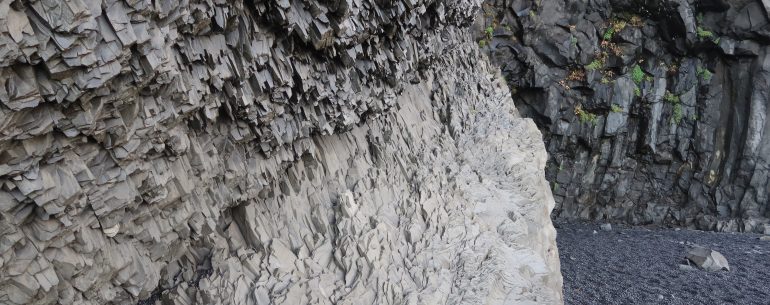As we move west towards Reykjavik the emphasis moves from ice (glaciers) to fire (volcanoes) and we started the day with a hint of fire. This involved a short drive back east towards Vik to Reynisfjara beach. This is a black sand beach – tiny flecks of basalt. The sand is formed when the lava comes into rapid contact with water, cooling almost instantly and shattering into sand and smaller debris. The eastern end of the beach has basalt sea stacks as well as a cave – known as Hálsanefshellir Cave with basalt columns and an array of different rock patterns.
The beach has something of a reputation and not in a good way. At least twelve serious emergency rescues and five fatalities have taken place between 2007 and 2024 with a sixth fatality in August 2025. Many of these could be the fault of Instagram (legal disclaimer attached at this point …) as people perch on the basalt columns, not realising (despite all the clear signage and a light warning system!) that sneaker waves can ‘sneak’ round and wash people off the beach. These waves are, as the name suggests, sneaky and are formed by the convergence of a series of swells as they pass over a submerged offshore ledge. They can extend many times further up the beach (and into the cave) than the regular waves. Following all the incidents, the authorities have finally decided to close the cave and basalt columns when a ‘red’ warning is in force. The day we visited, it was just amber, but even then there were some excitable shrieks as Instagram poses were disturbed by a sneaker wave.
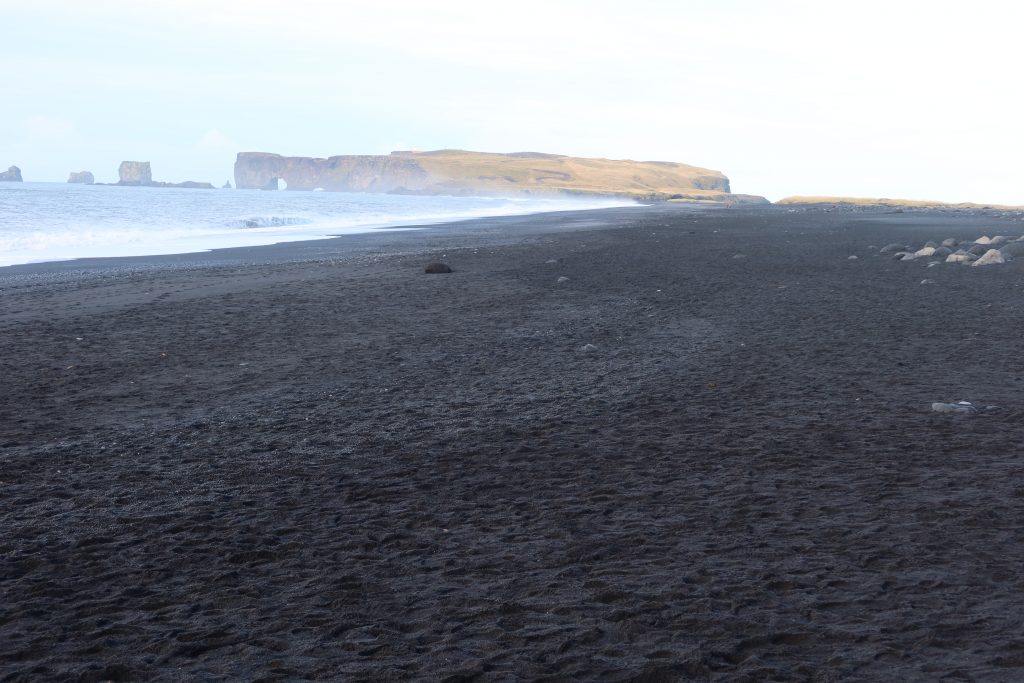
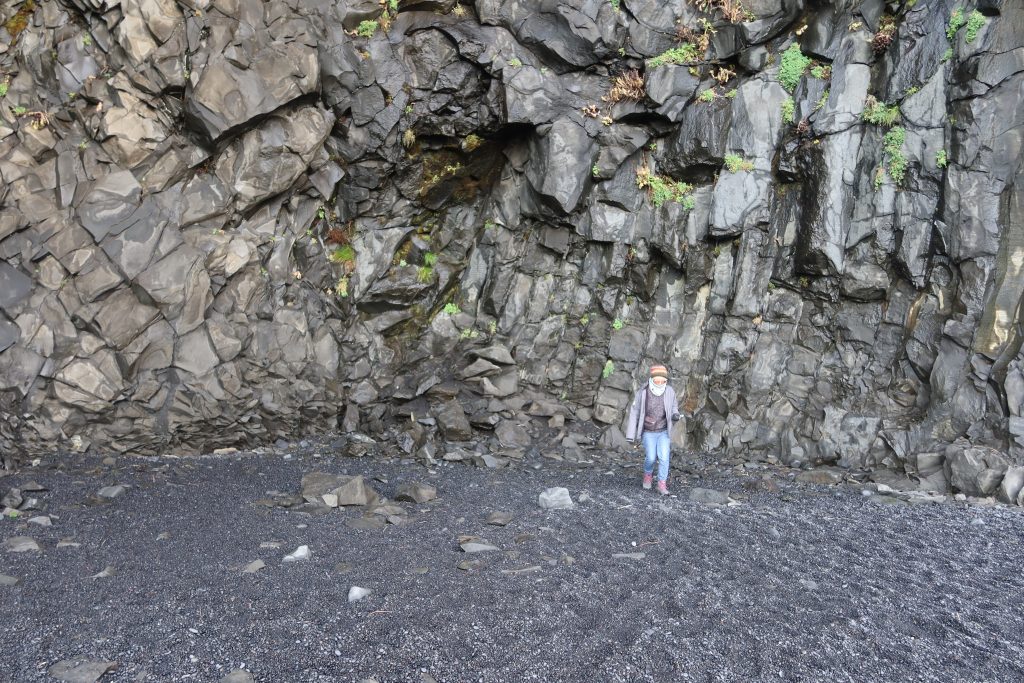
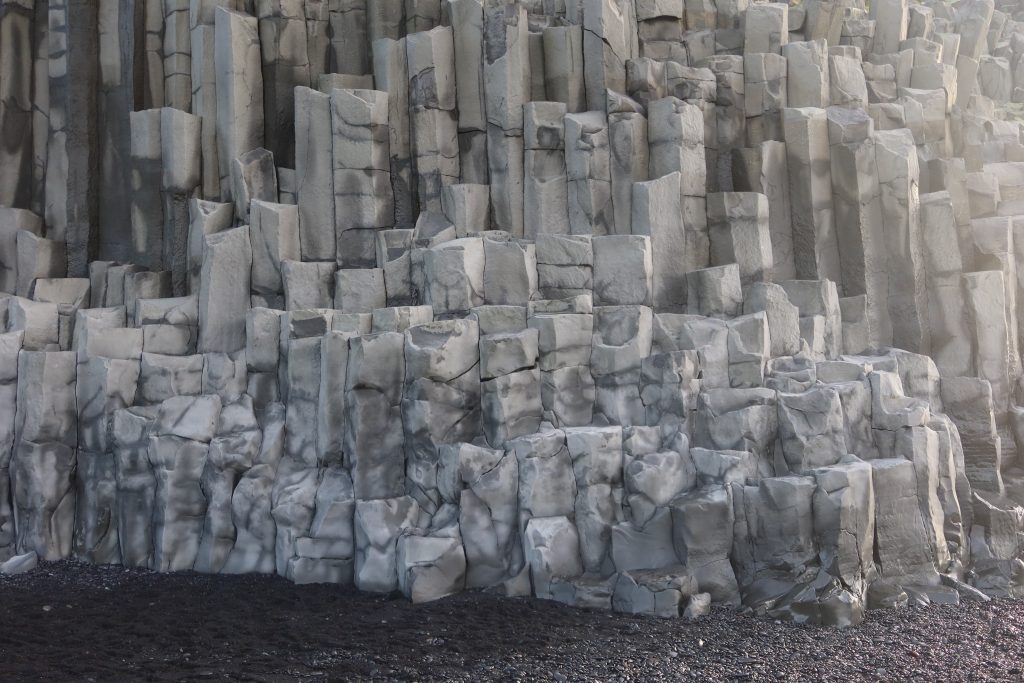
We then decided that we were suffering from glacier withdrawal symptoms. It had been around 18 hours since we last saw a glacier, so we headed off to the Sólheimajökull glacier tongue. This glacier is 11km long and is known as an outlet glacier. It connects through to the much larger Mýrdalsjökull glacier. This is the fourth largest glacier in Iceland and currently covers around 535 square kilometres. Sorry – make that 534 square kilometres – by the time you have read this, it will probably have receded further. The Sólheimajökull glacier is retreating around 60 metres a year ….
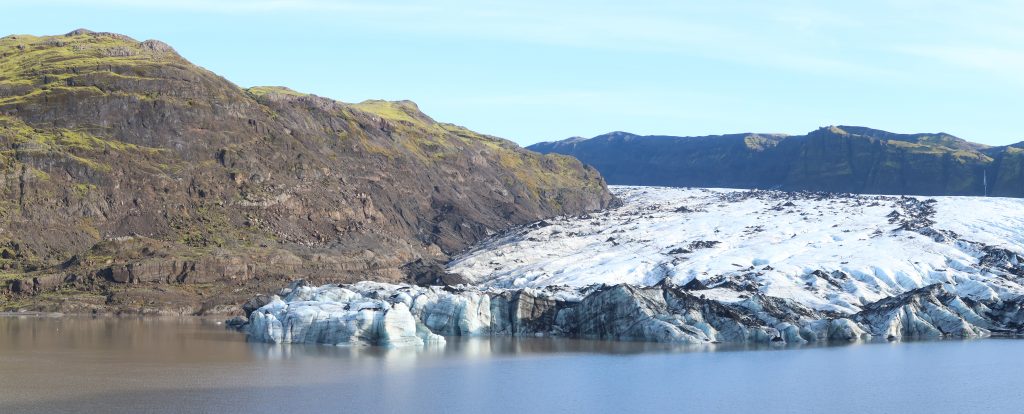
Still, despite all our reservations about climate change and the retreat of the glaciers, it is nevertheless stunning – all the more so when you consider the natural power inherent in these glaciers. Apparently if you are very quiet (and fairly close), you can hear them move …. The Sólheimajökull glacier is between the volcanoes Katla and Eyjafjallajökull (the one that disrupted in 2010 and caused air traffic chaos!).
And that segues us neatly into the next ‘fire’ part of the day. Directly on the N1 across towards Reykjavik is Hvolsvöllur. In 2017 a new exhibition – the Lave Centre – opened. This looks at the influence of volcanoes on Iceland (hint: it has had a strong influence) and goes a little into the science of volcanology (a branch of science distinct from vulcanology – the study of Star Trek films …). As a very recently opened centre, the emphasis was firmly on multimedia and interactivity and a lot of thought had clearly gone into the displays and people’s interactions with them. We started with on-screen interviews with people from Grindavik – the town near the Blue Lagoon on the Reykjanes peninsula which has been evacuated for much of 2025. The town (along with the Blue Lagoon) was evacuated on April 1st 2025 when the Icelandic Meteorological Office (IMO) said an “earthquake swarm” had started on the Sundhnúkur crater row. Lava and smoke filled the air nearby and successive eruptions have meant that residents are still not allowed back to their homes. We followed this with a short film in the cinema featuring lots and lots of lava and then moved on to the main exhibition. In this we learnt about the mantle, hot spots and mantle plumes. Iceland is on top of a plume and its location astride the Mid-Atlantic Ridge, where the Eurasian and North American Plates are moving apart, is perhaps the main reason for this intense volcanic activity. The presence of large amount of water in the magma (lowering the melting point) may also be a contributory factor. From the roof of the centre we could see a lot of the volcanoes contributing to this instability, the largest of which are Hekla, Katla and Eyjafjallajökull.
All this talk of volcanoes warmed us up for our final activity and we headed northwest for about an hour to get to the Secret Lagoon in Flúðir. This is a geo-thermal area, known locally as Gamla Laugin, and is the oldest swimming pool in Iceland. It was built in 1891 and used extensively through to 1947, but it then gradually fell into disrepair. In 2005 plans were developed to bring it back into use and it re-opened in 2014. The pool, with a base of black sand/gravel is heated by natural hot springs located immediately behind the pool. These springs are known as Vaðmálahver, and Básahver and there is even Litli Geysir – an active geyser which spouts every few minutes, though you do need to be fairly close to see it – it doesn’t spout far – hence the Litli part of the name! These springs provide all the water supply in the lagoon and it automatically refreshes completely every 24 hours. Walking into it is like walking into a warm bath and so we stayed in for a while …. With a warm glow of satisfaction and a side helping of lethargy, we eventually dragged ourselves out and made our way across to Bru, our accommodation for the next couple of nights.
